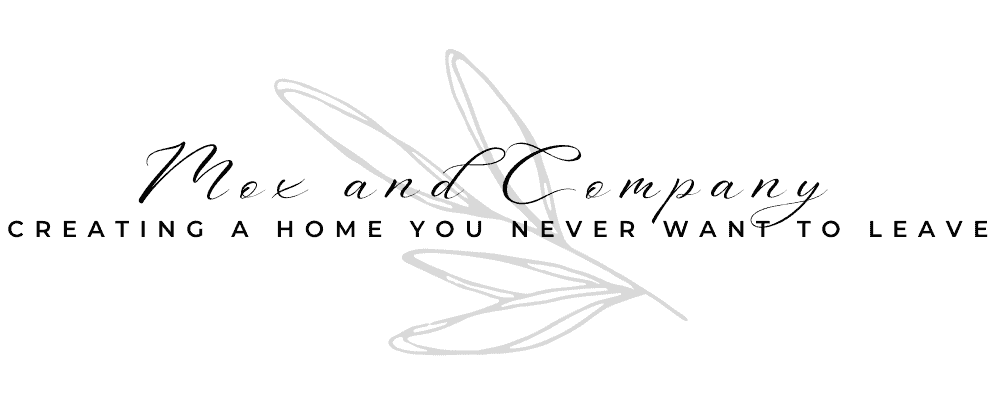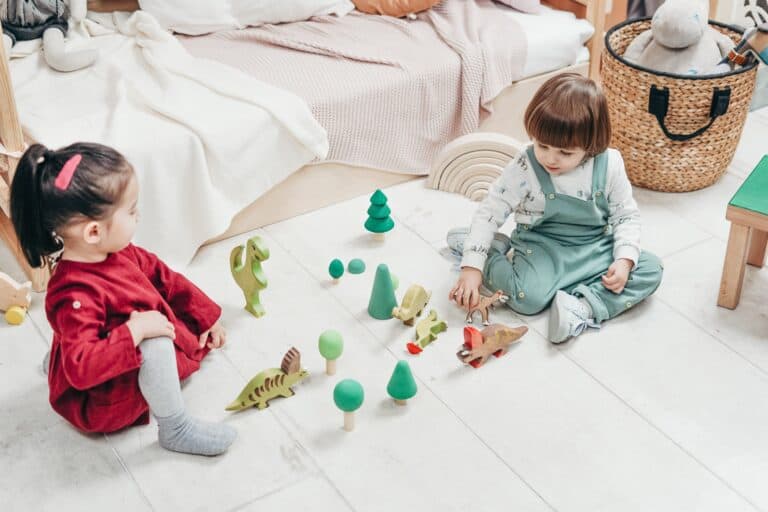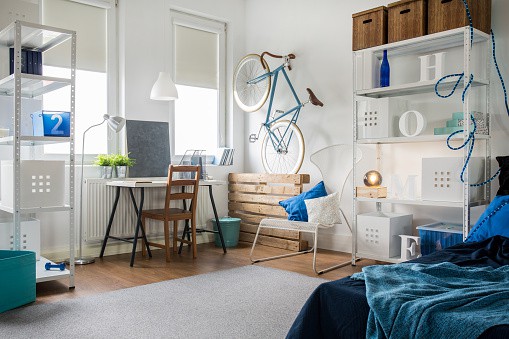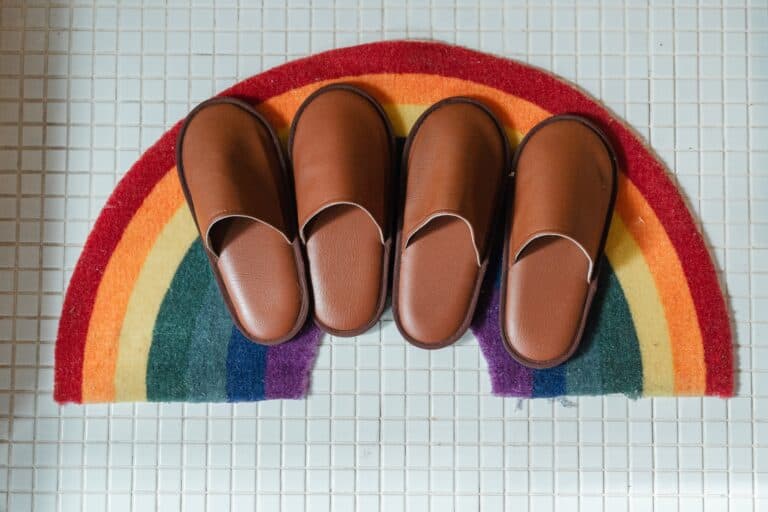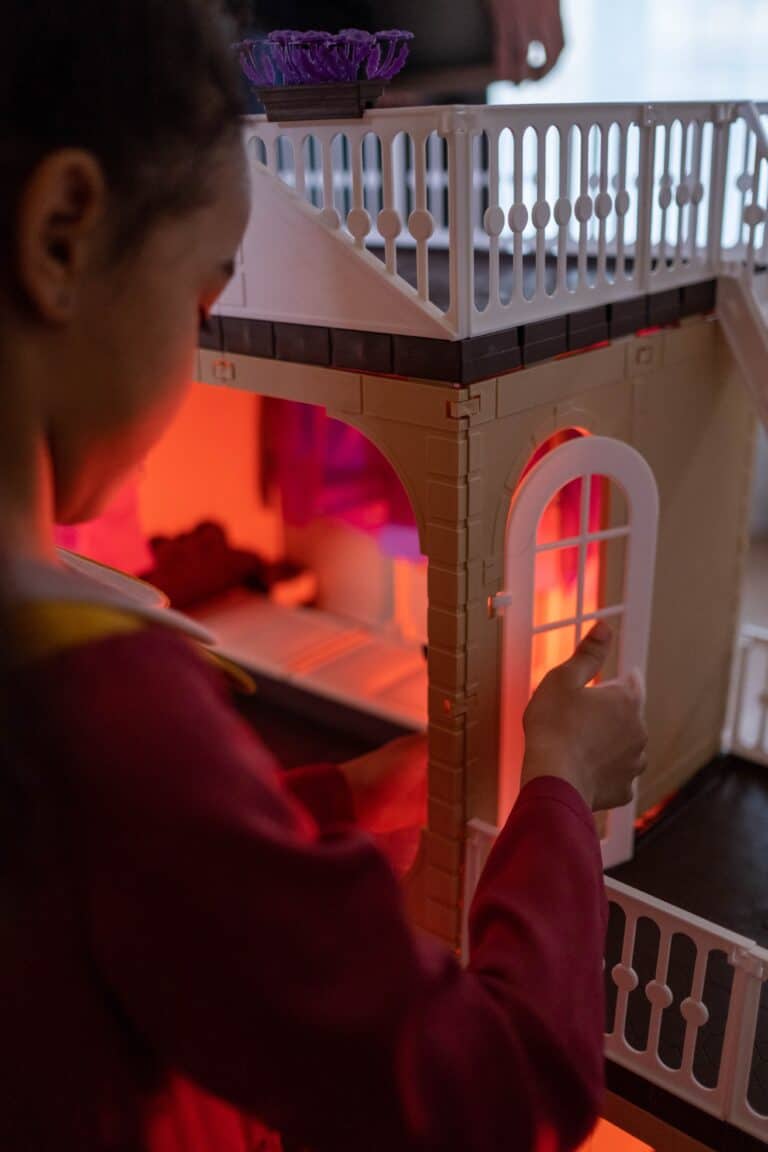Revamping Your Kitchen: Tile to Wood Floor Transition Ideas
Ever stood at the edge of a beautifully crafted wooden floor, gazing into the intricate patterns of kitchen tile, and wondered, kitchen tile to wood floor transition ideas – how do they make it look so seamless?” I have. Standin’ at the juncture of two distinct flooring materials in your kitchen, it’s a craft as much as an exact science.
See Also: Kitchen Backsplash Ideas
The meeting point where two different flooring materials come together in your kitchen isn’t just about function. It can be an aesthetic powerhouse that brings out the true personality of your space.
Tile to wood floor transition ideas can be confusing. Let’s help you navigate this journey we’re embarking on today. It’ll guide us through everything from blending techniques for smooth transitions to making bold statements with contrasting colors or unique patterns. You’ll even get hands-on tips for cutting tiles and installing wooden floors! The perfect mix of practical advice and inspiring design awaits!
See also: Unique Split Level Home Remodeling Ideas
So get those creative juices flowing, folks! Dive right into this article about tile to wood floor transition ideas and soak up all the insights.
Table Of Contents:
- Understanding Kitchen Tile to Wood Floor Transitions
- Types of Transitions for Kitchen Tile to Wood Floors
- Transition Strips for Kitchen Tile to Wood Floor Transitions
- Creating a Focal Point with Kitchen Tile to Wood Floor Transitions
- Achieving a Seamless Flow in Kitchen tile-to-tile to wood floor Transitions
- Cutting and Installing Transitions for Kitchen Tile to Wood Floors
- Choosing the Right Materials for Kitchen Tile to Wood Floor Transitions
- Personalizing Kitchen Tile to Wood Floor Transitions
- FAQs in Relation to Kitchen Tile to Wood Floor Transition Ideas
- Conclusion
Understanding Kitchen Tile to Wood Floor Transition Ideas
The world of kitchen design is full of choices. One such choice that can make a big difference in your space involves creating the perfect transition from tile to wood flooring. It’s like crafting a visually appealing bridge between two contrasting lands – one cool and hard, the other warm and soft.
Negar Kouchaki, an acclaimed interior designer, aptly showcases how striking visuals are born out of smart transitions. Let’s explore some innovative ideas for transitioning from kitchen tile to wood floor.
See also: Essential Tips to Add More Space
Mosaic Transition: A Creative Marvel
If you have ever enjoyed solving jigsaw puzzles as a kid or adult (no judgment here.), mosaic transitions might tickle your fancy.
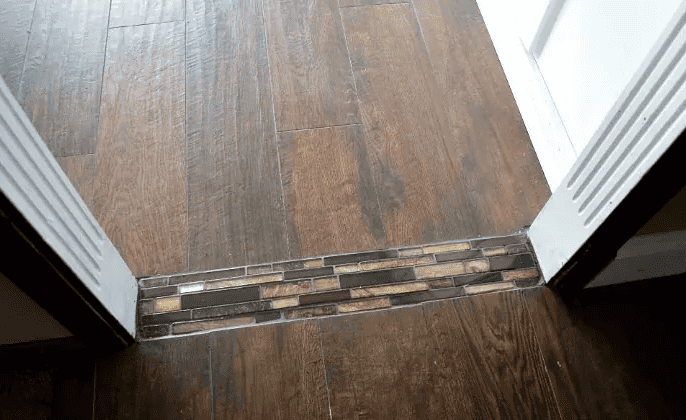
This type of transition involves cutting small pieces of tiles and assembling them together like puzzle pieces right where your tile meets the hardwood floor.
A seamless flow with straight lines may not always be everyone’s cup of tea. But don’t worry; curved transitions got you covered. The organic flow they offer brings harmony into space, much like how rivers meander through landscapes.
Metal Transition Strips: Bridging Two Worlds
Imagine this – walking over high-traffic areas without tripping or stumbling over edges where different materials meet on your kitchen floor?
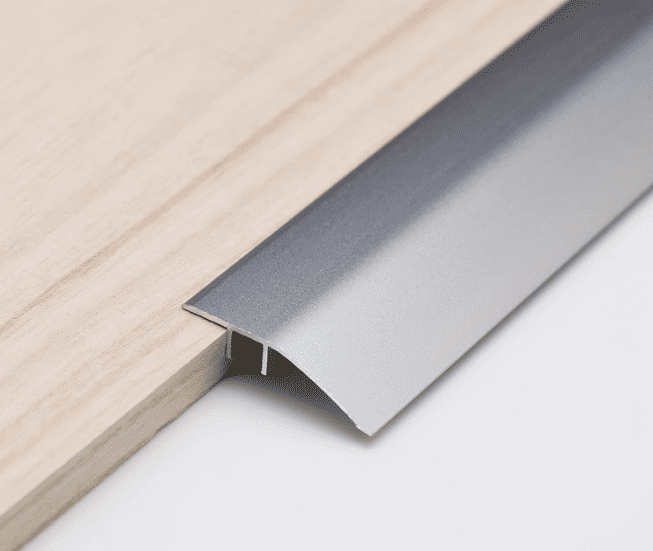
Metal transition strips make it possible while also adding sleek aesthetics suitable for any contemporary kitchen style.
Stainless steel offers durability underfoot while subtly reflecting light around the room – something we all could use more during those late-night fridge raids.
Focal Point Flooring: Making Bold Statements
Your personal preference can turn what was once just a functional necessity into a visually stunning focal point in your kitchen. This can be achieved by choosing contrasting colors or bold patterns where the tile transition happens.

Ever considered using mixed materials? You’d be surprised how great an option it is for creating that ‘wow’ factor. For instance, combining wood and stainless steel strips to create a unique pattern offers excellent visual impact.
Transform your kitchen with smart transitions from tile to wood flooring. Embrace the artistry of mosaic transitions, enjoy the practicality and sleek aesthetics of metal transition strips, or make a bold statement by creating a focal point using contrasting colors and mixed materials. Turn this functional necessity into an eye-catching design feature.
Types of Transitions for Kitchen Tile to Wood Floor Transition Ideas
Kitchen tile and wood floor transitions can dramatically impact the look and feel of your space. It’s a great opportunity to express personal style while creating a seamless flow between two different flooring materials.
See also: Home Remodeling Mistakes Couples Should Avoid
Blending Tile and Wood Floor Transitions
To make an elegant blend from kitchen tile to wood floors, you might want to consider mixed material transitions. By using elements like mosaic patterns or curved designs in your transition area, you create visually appealing interest points.

Mixed material transition involves incorporating small pieces of contrasting colors into your design. This way, it feels more natural where the tile meets the hardwood floor. A perfect mix-and-match.
Straight Transition: When Simplicity Speaks Volumes
A straight transition is another excellent choice when blending kitchen tiles with wood floors. This type creates a clean line where one flooring ends and another begins – no fuss at all. Still, this straightforward approach packs a powerful visual punch in areas of heavy foot traffic.

Curved Transition: Smooth Sailing on Your Floors
If you have been looking at tile to wood floor transition ideas, and If straight lines are not up your alley or if they do not match your contemporary kitchen design preferences then fret not. You could opt for curved transitions instead. These offer smooth movement as well as striking visuals when moving from tiles onto wooden planks.

The Bold Statement Maker: Contrasting Colors
Do you know what else makes a bold statement? Using contrasting colors in tile to wood floor transition ideas – say hello to that stunning black tile against blonde oak.
This kind of mixed material transition involves selecting colors that are opposite on the color wheel, such as black and white or blue and orange. It’s a daring move, but hey. You’re all about creating visually stunning spaces, right?
See also: Budget Friendly Remodeling Ideas for Your Fixer-Upper
Pattern Transition: The Wild Card
Think about experimenting with something different. Consider pattern transitions. This approach has you arranging your kitchen floor tiles in a unique layout before smoothly transitioning.
Embrace your personal style and enhance the flow in your kitchen with different types of transitions from tile to wood floors. From mixed material transitions using mosaic patterns, to simple straight lines or bold contrasting colors – there’s a solution for every taste. If you’re looking for something unique, patterned transitions could be just the thing.
Transition Strips for Kitchen Tile to Wood Floor Transitions
Let’s get real about tile to wood floor transition ideas. You’re blending the rustic charm of your hardwood floor with the cool sophistication of kitchen tile, but you need that little something extra to make it work: a transition strip.
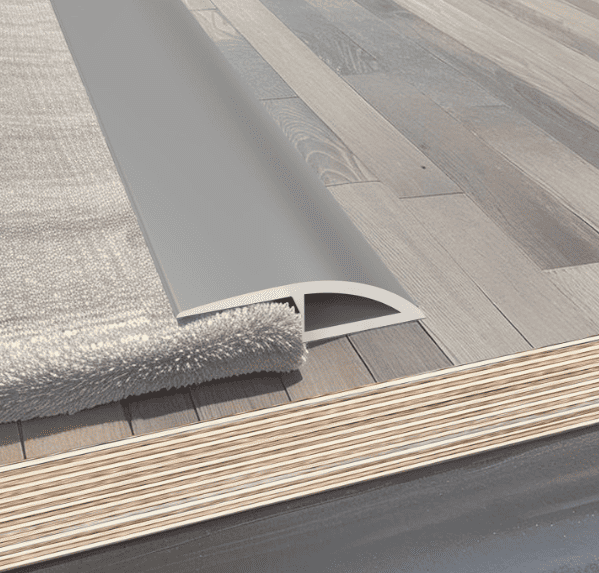
The unsung hero in any flooring changeover, these handy strips are all about function and aesthetics. They help manage those pesky height differences between different flooring materials while also adding an eye-catching visual impact. RAD suggests using stainless steel transition strips for a sleek modern look or opting for wood transition strips that match your hardwood flooring to keep things feeling organic.
Metal Transition Strips: The Silver Lining
A well-placed metal transition strip can be just what you need when your tile meets your wood floor. It provides both durability and high-traffic resistance—just think of them as the ‘bodyguards’ protecting where two surfaces meet.
They’re excellent choices for contemporary kitchens too. Stainless steel is like a black turtleneck—it goes with everything. So don’t hesitate; let this shining star take center stage in creating a seamless flow from one material to another.
Finding Your Perfect Match: Choosing the Right Transition Strip
This isn’t a one-size-fits-all kind of deal though—a great option depends on several factors such as personal preference and design aesthetic. Ask yourself questions like “Do I want my strip visible or concealed?” or “Am I looking more towards contrasting colors?”. Answering these will guide you toward making that perfect choice tailored specifically to YOUR kitchen. Negar Kouchaki has some stunning transition ideas to inspire you.
Beyond aesthetics, practical considerations also come into play. For instance, the material of your strip can make a big difference in terms of durability and maintenance. So remember to choose wisely.
The Functionality Factor: Beyond Just Looks
So, we’ve chatted about the visual pop transition strips bring. But hey, they’re not just eye candy. They’re great at smoothing out those height differences too.
Transition strips are your secret weapon when mixing the rustic charm of wood floors with sophisticated kitchen tile. These functional, aesthetic gems handle height differences and add visual impact. Whether you opt for sleek stainless steel or matching wooden strips depends on personal preference and design aesthetics. But remember, they’re not just a style statement—they also smooth out flooring transitions.
Creating a Focal Point with Kitchen Tile to Wood Floor Transitions
When it comes to creating stunning kitchen floors with tile to wood floor transition ideas, the devil is in the details. Contrasting colors or unique patterns can turn your floor transitions into focal points within your space.

Making a Bold Statement with Transitions
Your choice of flooring materials makes a big difference. Using contrasting colors in transitions not only adds visual interest but also highlights the change from tile to wood. A bold statement like this becomes an excellent choice for contemporary kitchens that want high-impact design elements.
A mixed material transition, using both tile and wood, allows you more freedom to experiment with color and texture combinations. By choosing materials wisely, you’ll be able to create visually appealing blends while maintaining functionality.
Mosaic patterns offer another way of adding character and style to your kitchen floors. Small pieces arranged thoughtfully create intricate designs that are truly captivating. RAD Design, renowned for its innovative approaches to interior design, often uses mosaic transition ideas as an effective way of achieving striking visuals on kitchen floors.
The key here is understanding that color and pattern play a significant role in the aesthetics of floor transitions – so don’t shy away from being creative.
Tackling Height Differences Through Creative Designs
If there’s one thing we know about houses: no two are exactly alike. The same applies when dealing with height differences between tile and hardwood flooring during remodeling projects.
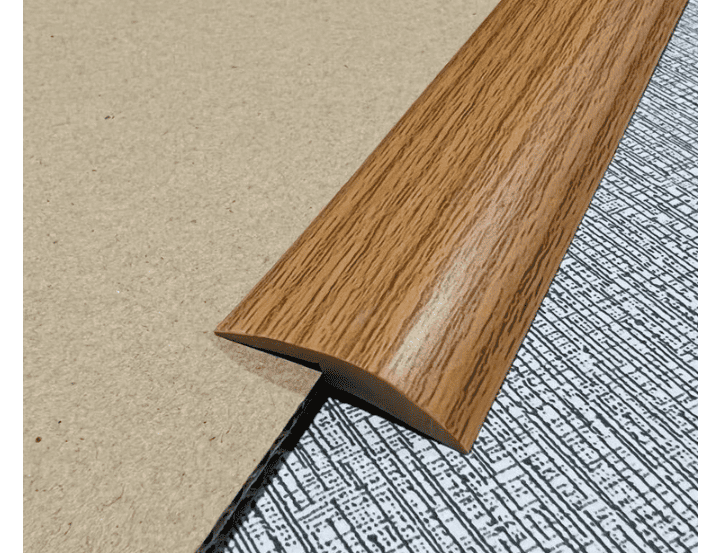
In such situations where unevenness exists between two different types of flooring materials – like ceramic tiles meeting oak planks – using custom-designed transitional strips will help ensure smooth movement across rooms without compromising on aesthetics.
Stainless steel transition strips, for example, can give your kitchen a sleek and modern look. They are also durable enough to withstand high-traffic areas like the kitchen.
Mixing It Up with Material Transitions
Choosing different materials for your floor transitions is another way of making a bold statement. The mix of tile inlay within hardwood flooring or vice versa brings out the best features of both materials while creating visually stunning effects.

A wood-to-tile transition involves choosing tiles that complement the natural grain and color of the wood floors – it’s all about achieving a harmonious balance.
If you’re looking to go bolder still, why not consider using metal as part of your mixed material transition? A metal transition strip between tile
When revamping your kitchen, consider making the transition from tile to wood flooring a design feature. Experiment with contrasting colors, mixed materials and unique patterns for a high-impact visual statement. Tackle height differences creatively using transitional strips without compromising aesthetics. Always remember: balance style with practicality.
Achieving a Seamless Flow in Kitchen Tile to Wood Floor Transitions
Seamless transitions from kitchen tile to wood floors can make your space feel cohesive and visually appealing. Coordinating colors and textures of tile and wood is one way to create a stunning transition.

One popular approach involves creating a straight transition where the tile meets the wood floor seamlessly. This style works great for contemporary kitchens, offering an elegant yet straightforward visual impact. Creating a smooth transition between the tile and wood flooring is an ideal choice for areas that experience heavy foot traffic, as it reduces the risk of tripping.
To achieve this seamless flow, you’ll need some tools at hand: A good eye for detail, patience, time… oh. And don’t forget your personal preference which plays a big role here too.
Straight Transition Ideas
In straight transitions, focus on blending both flooring materials smoothly so that there isn’t any height difference between them. But remember – not all tiles are created equal. You may be tempted to pick a tile that doesn’t quite coordinate with your hardwood flooring, but it’s important to find complementary shades or patterns that both emphasize the natural grain of your wood and highlight the beauty of the tiles.
The trick? Choosing complementary shades or patterns that highlight the natural grain of your hardwood floor while accentuating the beauty of your chosen tiles. SOOETSUN STUDIO provides beautiful examples of such pairings on their Instagram page.
Mixed Material Transition Involves Creativity (and Patience)
If you’re more adventurous with design elements, consider using mixed material transition ideas like mosaic patterns made from small pieces of different types of tile and even contrasting colors for added drama.

This approach often involves cutting intricate designs into either side of the transition area and then filling it with contrasting tile inlays. The end result? A visually stunning centerpiece that adds a unique flair to your kitchen design.
Seamless Doesn’t Mean Invisible
Don’t think seamless transitions should be invisible. Your floor transition can serve as a focal point in your kitchen if done right.
Feel free to play around with different materials, or toss in some eye-catching visuals.
Creating a seamless kitchen tile to wood floor transition isn’t just about blending colors and textures. It’s also about adding personal style, whether through straight transitions with complementary shades or mixed material transitions for added drama. Don’t forget: your floor transition can be a stunning focal point in your kitchen.
Cutting and Installing Transitions for Kitchen Tile to Wood Floors
Transitioning from kitchen tile to wood floors isn’t just about slapping two materials together. Navigating the changeover from kitchen tile to wood flooring is a mix of artistry, science, and hard work. The key is cutting your tiles accurately for the transition areas and installing wood floor transitions properly.
Now let’s address the elephant in the room – height differences between flooring materials can be tricky but fear not. Various inventive solutions exist to deal with these issues.
Nailing Down Those Tiles
The first step towards achieving smooth floor transitions involves creating accurate cuts on your kitchen tiles. But how do you get those perfect edges? Simple – use a quality tile cutter or wet saw with diamond blades designed specifically for this task.
This helps make sure that where your tile meets the wood floor, it does so seamlessly without any rough or jagged edges spoiling the look (or tripping anyone up).
Laying Out Your Wooden Flooring
Moving onto wooden flooring installation – hardwoods like oak, maple, or walnut are excellent choices because they’re durable enough to withstand high-traffic areas like kitchens while offering stunning visuals.
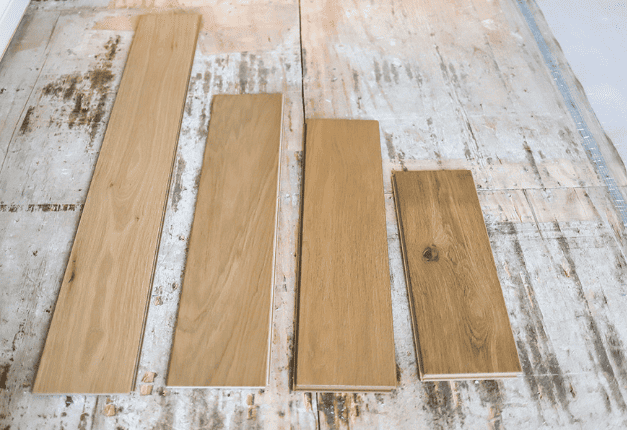
You’ll want to lay out each piece considering its natural grain direction before nailing it down; this will ensure visually appealing results that align perfectly with their adjacent tiles. Hilton Carter, known for his impeccable taste in interiors suggests “planning out everything beforehand ensures no surprises during installation.”
Facing Height Differences Head-On
If there’s one thing guaranteed when dealing with mixed material floors such as our case here – it’s varying heights. Fear not though because transition strips come to the rescue. These small pieces of metal, often stainless steel or aluminum, bridge the gap between your tile and wood floors.
They are not just functional but also offer a contemporary kitchen look that adds to the visual impact of your space. They’re an excellent choice for handling height differences while maintaining a seamless flow from one flooring material to another.
Switching from kitchen tile to wood floors is a mix of creativity and precision. You’ll need spot-on cuts and correct fitting, so make sure you’re using a top-notch tile cutter or wet saw. When it comes to the wood flooring, go for tough hardwoods like oak or maple. Don’t forget to plan their layout with the grain direction in mind. And if you’re fretting over height differences? No sweat. Transition strips got your back.
Choosing the Right Materials for Kitchen Tile to Wood Floor Transitions
When planning your kitchen tile to wood floor transitions, one key aspect is picking the right materials. This choice can make a big difference in creating a visually appealing and functional transition.

You might be asking yourself – “Should I opt for tiles with bold patterns or go natural with hardwood flooring?” Well, let’s help you navigate through these decisions.
Natural Grain in Wood Flooring
A striking visual impact can be achieved by considering the natural grain of wood flooring options for transitions. The unique textures and colors present within different types of wood create an organic look that’s hard to match.
This option would be an excellent choice if you’re looking at designing contemporary kitchens where the seamless flow from one material to another plays a significant role in maintaining design harmony. Hilton Carter’s designs on Instagram, showcase how beautifully this style works.
Metal Transition Strips: A Modern Touch
If modern aesthetics are more up your alley, metal transition strips could fit perfectly into your plan. These small pieces of stainless steel serve as stylish bridges between contrasting flooring materials like tile and wood.
Not only do they offer functionality but also add flair when transitioning from cool kitchen tiles to warm wooden floors.
The Visual Intrigue of Tiles

Tiles come packed with potential. They are available in countless designs, colors, shapes, and sizes – offering infinite possibilities when it comes to choosing just what fits best within personal style requirements or overall interior décor theme goals.
For instance, mosaic-patterned tiles bring vibrancy along with their own captivating appeal, which instantly transforms any space and makes it feel lively and dynamic.
Remember, the idea is to create a transition that blends in yet stands out. It’s like walking on a tightrope – balancing between creating an eye-catching focal point and ensuring it doesn’t overshadow other design elements of your kitchen.
The Height Difference Factor
Also, don’t forget to take into account the height difference between tile and wood when picking out materials for transitions.
Choosing the right materials is crucial for creating a visually striking and functional kitchen tile to wood floor transition. Consider natural grain wood flooring for an organic, contemporary look or metal transition strips for modern aesthetics. Tiles offer endless design possibilities but remember to balance their appeal with other kitchen elements. Also, don’t overlook the height difference between tile and wood.
Personalizing Kitchen Tile to Wood Floor Transitions
When it comes to personal style, your kitchen floor transition can make a big difference. It’s not just about tile meeting wood; it’s an opportunity for self-expression. The choices you make here are crucial in creating visually stunning effects and enhancing the overall appeal of your space.

The key is finding a balance between functional requirements like height differences and visual impact. This delicate dance often involves choosing the right flooring materials that align with your aesthetic preferences.
Making Your Transition Area Unique
Your transition area could be as unique as you are. You may decide on something subtle or go all out with bold statement pieces such as contrasting colors or mixed material transitions that draw attention instantly.
You might opt for seamless flow using straight transitions where tile meets wood smoothly, keeping everything harmonious yet interesting. SOOETSUN STUDIO provides some great inspiration for this approach.
Incorporating Mosaic Patterns
If subtlety isn’t quite your style, then how about making a striking visual centerpiece? Using small pieces of tiles arranged in intricate mosaic patterns creates beautiful focal points. Each tiny piece works together to form a stunning picture when viewed from afar—much like pixels on a screen forming images.
This kind of mixed material transition involves careful planning but results in truly personalized designs reflecting individual tastes perfectly.
Finding Balance Between Materials
Natural grain hardwood flooring has its charm, which pairs well with many types of tiles depending upon their color and texture. Yet another excellent choice would be metal strips offering both practicality and aesthetics at once. Hilton Carter offers some excellent examples of material balance in kitchen designs.
When it’s all said and done, your style is about how you mix these elements to create a space that fluently speaks ‘you’. Remember, the only real rule here: there are no rules. It’s completely up to you.
Express your style with kitchen floor transitions. From tile to wood, balance function and flair. Consider straight transitions for a seamless look or bold mosaic patterns for an eye-catching centerpiece. Mix materials like natural hardwood and metal strips to achieve harmony in design. Remember: there are no rules – just opportunities to create a space that screams ‘you’.
FAQs in Relation to Kitchen Tile to Wood Floor Transition Ideas
How do you transition flooring between tile and wood?
To make a smooth transition from tile to wood, use a T-bar or reducer strip. You can also blend the two by using similar colors or patterns.
How do you transition two types of flooring?
The best way is to employ a suitable floor transition strip that matches your style and function needs. These come in various materials like metal, rubber, or vinyl.
How do you transition floor tile to floor tile?
If transitioning between different tiles, consider using color-coordinated caulk. Alternatively, create an eye-catching pattern with contrasting tiles for added visual interest.
Conclusion
Discovering kitchen tile to wood floor transition ideas has been an enlightening journey. We’ve seen how blending techniques create seamless transitions and the importance of making bold statements with contrasting colors or unique patterns.
The process involves choosing suitable materials, like visually interesting tiles or natural grain woods. It also means considering personal style through elements like mosaic inlays or elegant touches.
Remember: attention to detail such as cutting tiles precisely and installing wooden floors correctly makes a big difference! With these insights, you’re now equipped to elevate your kitchen’s aesthetics while ensuring functionality.
Dive into this creative endeavor; let your kitchen floor tell its own stunning story!
